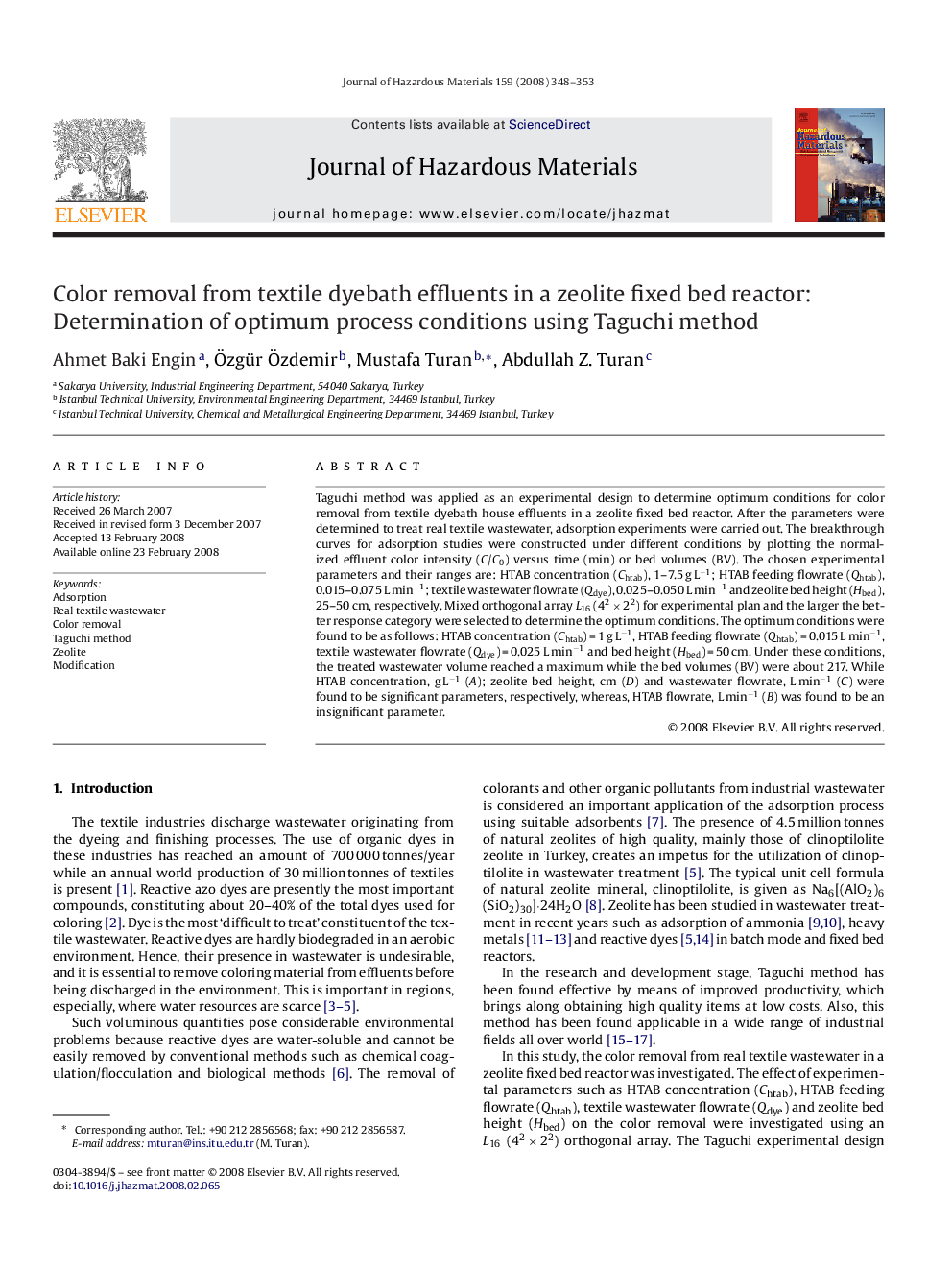| Article ID | Journal | Published Year | Pages | File Type |
|---|---|---|---|---|
| 582973 | Journal of Hazardous Materials | 2008 | 6 Pages |
Abstract
Taguchi method was applied as an experimental design to determine optimum conditions for color removal from textile dyebath house effluents in a zeolite fixed bed reactor. After the parameters were determined to treat real textile wastewater, adsorption experiments were carried out. The breakthrough curves for adsorption studies were constructed under different conditions by plotting the normalized effluent color intensity (C/C0) versus time (min) or bed volumes (BV). The chosen experimental parameters and their ranges are: HTAB concentration (Chtab), 1-7.5 g Lâ1; HTAB feeding flowrate (Qhtab), 0.015-0.075 L minâ1; textile wastewater flowrate (Qdye), 0.025-0.050 L minâ1 and zeolite bed height (Hbed), 25-50 cm, respectively. Mixed orthogonal array L16 (42 Ã 22) for experimental plan and the larger the better response category were selected to determine the optimum conditions. The optimum conditions were found to be as follows: HTAB concentration (Chtab) = 1 g Lâ1, HTAB feeding flowrate (Qhtab) = 0.015 L minâ1, textile wastewater flowrate (Qdye) = 0.025 L minâ1 and bed height (Hbed) = 50 cm. Under these conditions, the treated wastewater volume reached a maximum while the bed volumes (BV) were about 217. While HTAB concentration, g Lâ1 (A); zeolite bed height, cm (D) and wastewater flowrate, L minâ1 (C) were found to be significant parameters, respectively, whereas, HTAB flowrate, L minâ1 (B) was found to be an insignificant parameter.
Related Topics
Physical Sciences and Engineering
Chemical Engineering
Chemical Health and Safety
Authors
Ahmet Baki Engin, Ãzgür Ãzdemir, Mustafa Turan, Abdullah Z. Turan,
